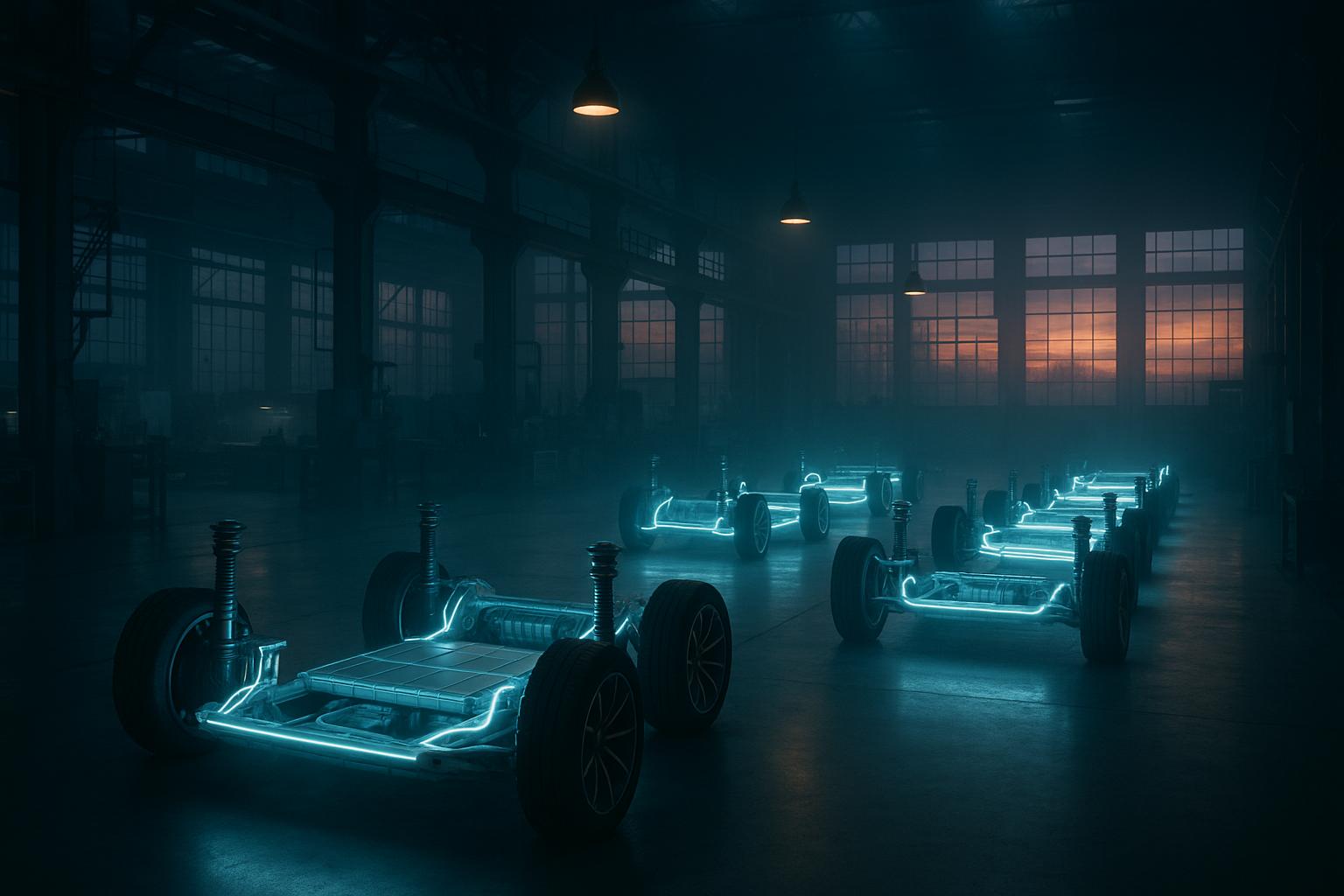At the Munich IAA Mobility show, leading European automakers presented an array of new electric vehicles (EVs), signalling intensified efforts to compete amid a confluence of crises—from stringent EU carbon emission targets and tariffs to rising costs and tough competition from Chinese manufacturers. Companies like Volkswagen, BMW, and Mercedes-Benz demonstrated a strategic shift: rather than going all-electric exclusively, several are adopting more diversified production plans that maintain hybrid and internal combustion engine models, recognising the considerable challenges in meeting Europe’s 2035 emissions targets.
Volkswagen’s CEO Oliver Blume highlighted the multifaceted difficulties faced by Europe’s auto giants, citing the combined impact of the Chinese slowdown, U.S. tariffs—which he said cost the company billions of euros—and the costly restructuring required. Porsche, VW’s luxury arm, is caught in a particularly tight spot between these tariffs and weak sales in China, making it unlikely to reach its 20% profit margin target in the near term. Meanwhile, Stellantis’ European division, under Jean-Philippe Imparato, explicitly acknowledged that the EU’s carbon targets for 2035 are increasingly unrealistic, prompting a strategic decision to avoid focusing solely on EVs. This approach aligns with Stellantis CEO Carlos Tavares’ earlier comments that electric vehicle production costs run 40-50% higher than petrol models, necessitating a pivot to more cost-efficient supply chains and retention of multi-energy platforms to balance affordability with regulatory demands.
The urgency to produce more affordable EVs was on full display. Companies are racing to develop electric models priced under €25,000, aiming to broaden consumer adoption amid high vehicle costs and reduced public subsidies. Renault, for instance, plans a radical cut in EV costs by around 40% by 2028 through integrating lithium iron phosphate (LFP) batteries—less costly and cobalt-free—into its lineup starting next year. Renault CEO Francois Provost indicated that few European automakers have adopted this battery tech widely, underscoring Renault’s bid to stay competitive versus Chinese producers.
Chinese rivals simultaneously intensify their push into Europe. BYD, China’s largest automaker, plans to localise European EV production within three years to sidestep EU tariffs, initially focusing on plug-in hybrids in the short term. Leapmotor, another Chinese company, is set to expand its affordable EV offerings with its B05 hatchback, slated for European delivery by mid-2026. The company’s sporty, colour-rich new model embodies an aggressive challenge in the European affordable electric segment, as part of a joint venture with Stellantis that will launch Leapmotor International across nine European countries this September, later extending to other regions globally. This partnership leverages Stellantis’ extensive distribution network and follows Stellantis’ €1.5 billion investment in Leapmotor, a strategic move to mitigate geopolitical and tariff pressures.
BMW remains a standout European competitor in the luxury EV market. Despite a cooling EV demand overall, the company increased its EV sales share from 9% in 2022 to 15% in 2023 and turned a profit on its 376,000 units sold. BMW’s robust investment in EV-only production facilities and innovative models under its Neue Klasse line—featuring advanced charging, autonomous driving, and enhanced display technologies—illustrates its commitment to capturing market share amid uncertain market conditions. CEO Oliver Zipse has cautioned against potential obsolescence for newer EV entrants that cannot keep pace with such advancements.
The broader European EV market faces tough economic and political headwinds. While EVs accounted for nearly one in five new vehicle registrations in France recently, overall European market shares for EVs have stalled or declined due to reduced subsidies, especially in Germany. This erosion fuels political resistance from various factions questioning the feasibility of the 2035 combustion engine ban. Major carmakers are thus hedging their bets by diversifying product lines and investing in hybrid technologies. The real test for the European EV industry, commentators suggest, will come in 2026 when the EU revisits its phase-out timeline amid continuing economic pressures.
Underlying all these developments are supply chain and cost pressures that threaten the ecosystem supporting European EV production. Suppliers face immense burdens as automakers push for cost reductions to offset the higher manufacturing expenses of EVs. The competition with Chinese manufacturers—who integrate much of their production in-house and control costs tightly—adds urgency. The pandemic and geopolitical tensions have already pushed raw material prices up and forced layoffs in supplier companies like Forvia, Continental, and Bosch. Industry leaders stress the need to maintain supplier viability to avoid disrupting production and competitive positioning.
In sum, the Munich car show reveals a European auto industry grappling with an intricate balancing act: meeting ambitious environmental goals while navigating economic realities and fierce international competition. While investments in electrification continue robustly, the sector exhibits increasing pragmatism through diversified vehicle portfolios, collaborations with Chinese partners, and a clear focus on affordability to drive broader market adoption as the road to 2035 remains fraught with uncertainty.
📌 Reference Map:
- Paragraph 1 – [1], [5]
- Paragraph 2 – [1], [3], [5]
- Paragraph 3 – [1], [2], [3], [5]
- Paragraph 4 – [1], [6]
- Paragraph 5 – [4], [1]
- Paragraph 6 – [5], [3], [7]
- Paragraph 7 – [1], [5], [7]
Source: Noah Wire Services
